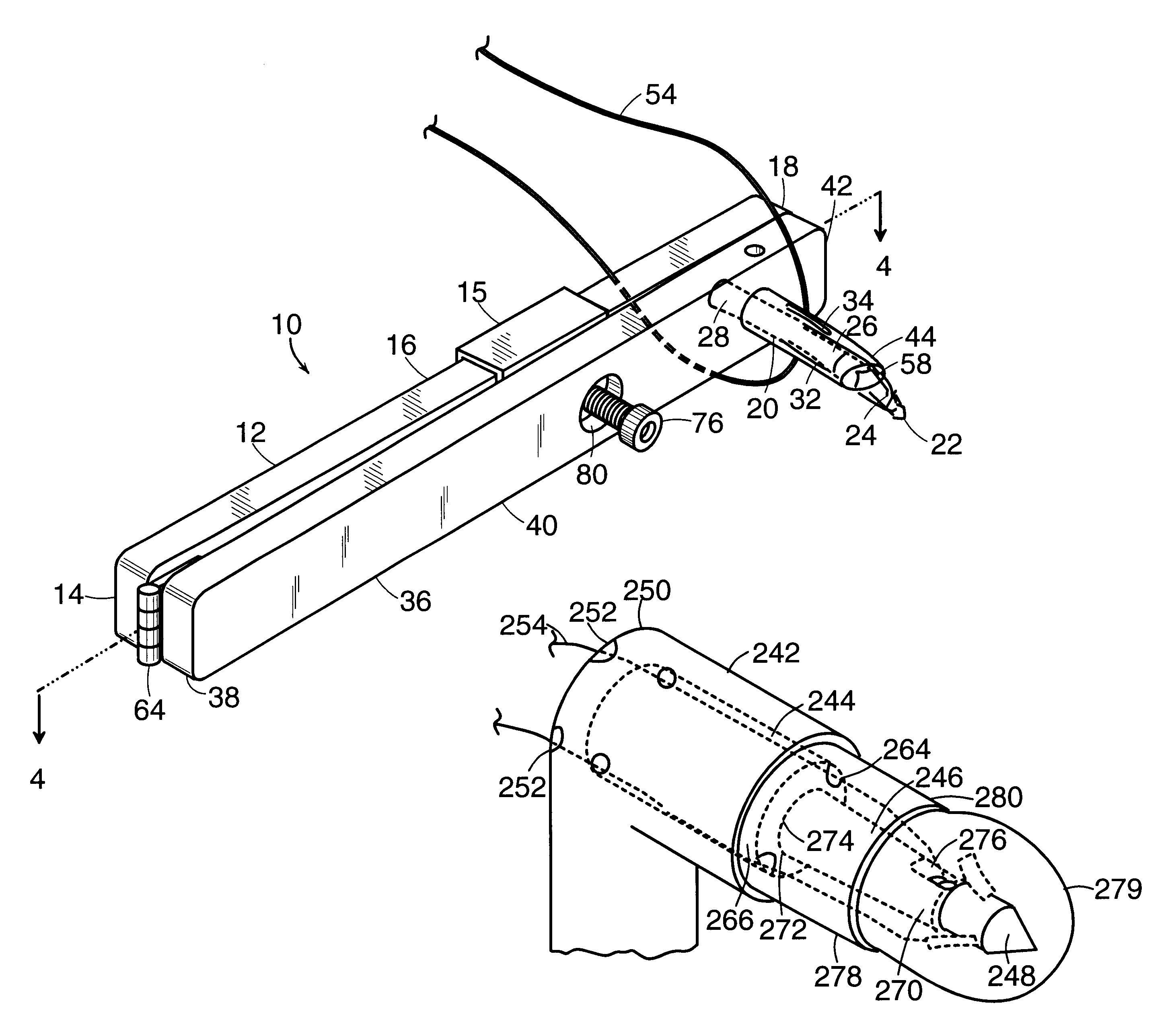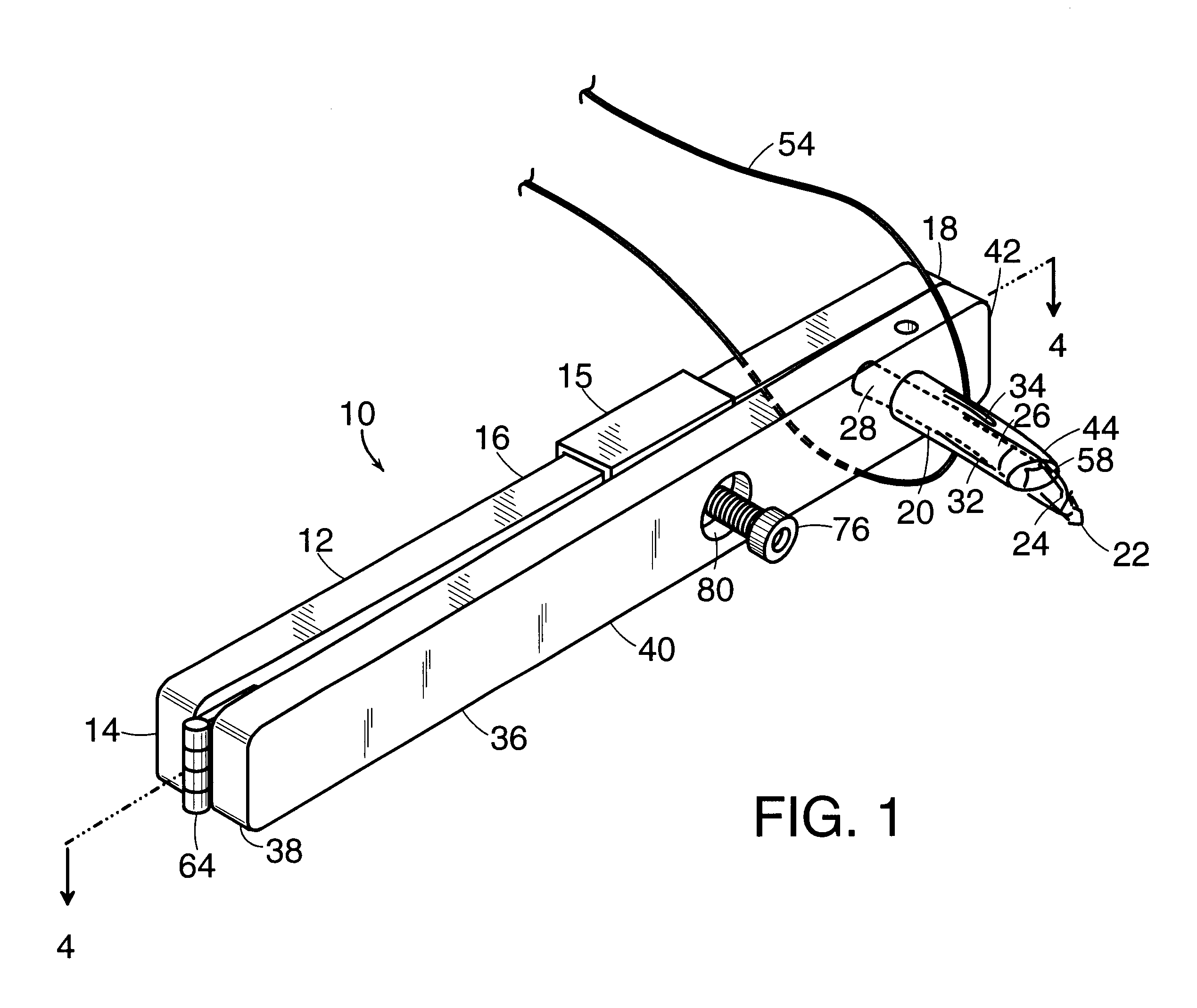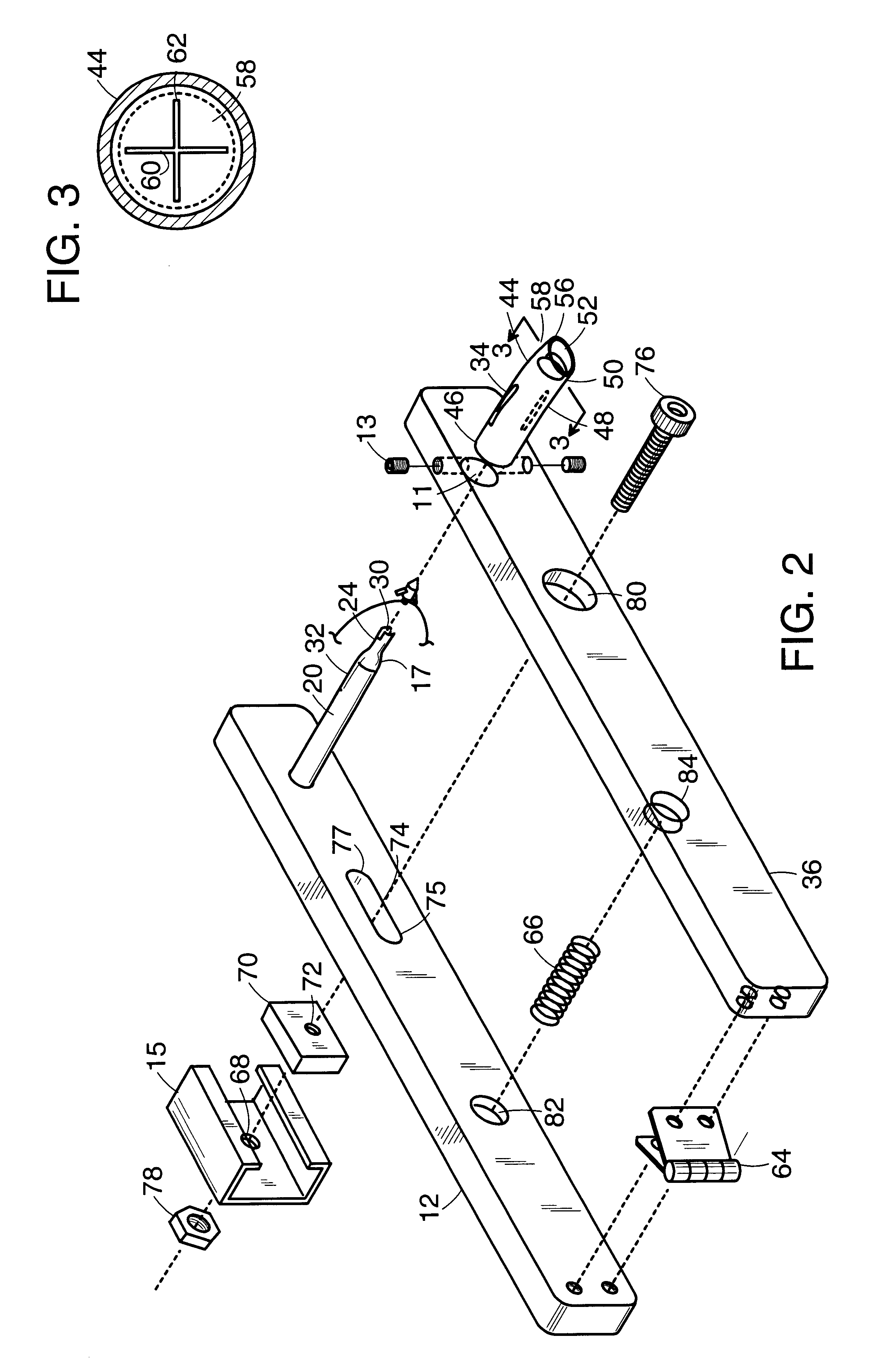Protective sheath for transvaginal anchor implantation devices
- Summary
- Abstract
- Description
- Claims
- Application Information
AI Technical Summary
Problems solved by technology
Method used
Image
Examples
example 1
Compression or Stabilization of the Bladder Neck with Sutures
The bone anchor implantation device can be used in incontinence treatments in which the bladder neck is compressed or stabilized with sutures. A Foley catheter is inserted into the urethra to indicate its location. An incision is then made through the anterior vaginal wall, preferably approximately 1 cm lateral to midline and adjacent to the bladder neck. The vaginal wall is retracted to allow access to the endopelvic fascia. The bone anchor implantation device, having a bone anchor with sutures attached thereto releasably engaged with the inserter shaft, is introduced through the opening in the vaginal wall with the device locked in the position in which the inserter shaft is fully retracted within the cannula, and the sharp point is pressed through the fascia to contact the posterior pubic bone. Preferably, the anchor implantation site is located lateral to the symphysis pubis and cephalad to the inferior edge of the pub...
example 2
Example 2 describes use of the bone anchor implantation device in a procedure in which the bladder neck is compressed or stabilized with a sling. However, it will be appreciated that the bone anchor implantation device can be used with other methods in which the bladder neck is compressed or stabilized with a sling.
Double Anchor Placement: For Sling Or Bolster Procedure
The bone anchor implantation device can also be used in incontinence treatments in which the bladder neck is compressed or stabilized using a sling. Preferably, in such procedures two bone anchors are placed on either side of the urethra. However, one of ordinary skill in the art will appreciate that one or more than two bone anchors per side can be used. The procedure is performed as follows.
A Foley catheter is inserted into the urethra to indicate its location. Starting adjacent to the bladder neck on either side of the urethra, a 1 cm incision is made through the anterior vaginal wall approximately 1 cm lateral to ...
PUM
 Login to View More
Login to View More Abstract
Description
Claims
Application Information
 Login to View More
Login to View More - R&D
- Intellectual Property
- Life Sciences
- Materials
- Tech Scout
- Unparalleled Data Quality
- Higher Quality Content
- 60% Fewer Hallucinations
Browse by: Latest US Patents, China's latest patents, Technical Efficacy Thesaurus, Application Domain, Technology Topic, Popular Technical Reports.
© 2025 PatSnap. All rights reserved.Legal|Privacy policy|Modern Slavery Act Transparency Statement|Sitemap|About US| Contact US: help@patsnap.com



